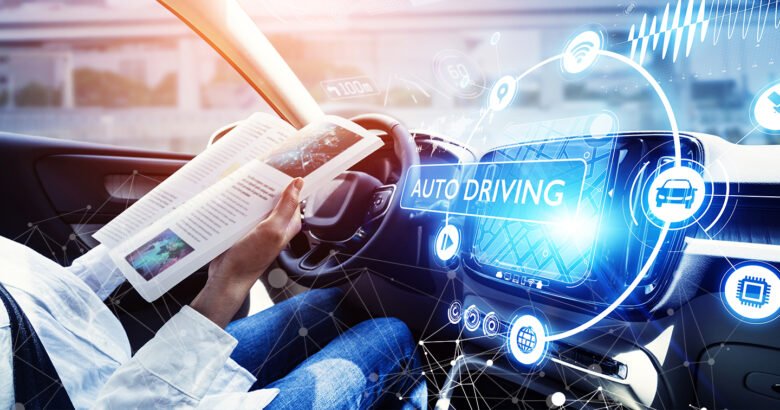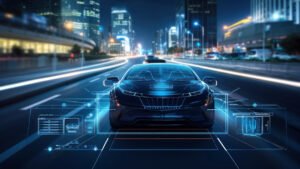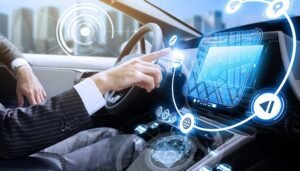Self-driving cars, also known as autonomous vehicle technology, are a groundbreaking invention that is changing the way people travel and use transportation systems. Advanced software, sensors, cameras, radar, and artificial intelligence (AI) can help these cars navigate the road and drive themselves without human assistance. Self-driving cars have been an idea for a long time, but only recently have significant advances been made to bring the dream of fully autonomous vehicles closer to reality.
1. How Self-Driving Cars Have Changed Over Time
A lot of work is being done to make self-driving cars a reality. The first tests of self-driving cars took place in the 1920s, but the technology only really started to improve in the late 2000s. Tech companies like Tesla, Waymo, and Uber have invested heavily in the development of self-driving technology in recent years. These companies are pushing the boundaries of the automotive industry. This change is being accelerated by the addition of artificial intelligence, machine learning, and high-resolution sensors that allow cars to “learn” and improve their driving capabilities over time.
2. Different Levels of Autonomy in Cars
There are different stages of autonomous vehicle technology, from Level 0 (no automation) to Level 5 (full automation). At Level 0, the driver has complete control of the car. At Level 5, the vehicle can do everything on its own, without human assistance. Most autonomous vehicles on the market today operate at Level 2 or 3. At these levels, the car can perform some driving tasks, such as turning and accelerating, but the driver must still be engaged and ready to take over if necessary.
3. Key Technologies Enabling Autonomous Vehicles
Several key technologies enable cars to drive themselves. First, sensors such as LIDAR (Light Detection and Ranging), radar, and cameras collect information about the car’s surroundings. This helps it find obstacles, people, and other vehicles. Real-time AI algorithms process this information, allowing the car to determine its speed, direction, and safety. GPS and mapping technologies are also important because they help self-driving cars find routes in complex environments and follow traffic signs and road signs.
4. How Self-driving Cars can Improve Safety
One of the biggest benefits of autonomous vehicle technology is its ability to make roads safer. Most traffic accidents are caused by human error. Distraction, fatigue, and poor driving can all lead to accidents. But self-driving cars won’t get tired or go off track. They use sensors and artificial intelligence to make split-second decisions, which can significantly reduce the chance of an accident. Some studies suggest that traffic fatalities could be reduced by as much as 90% if self-driving cars were to become widespread.
5. Make Better Use of Transportation
The use of self-driving cars can make mobility more efficient. By being able to talk to each other and to transportation infrastructure, self-driving cars can find the best routes, reduce traffic, and use less gas. For example, self-driving cars can drive closer together, reducing drag and fuel consumption. Additionally, fleets of self-driving cars can operate 24 hours a day, reducing the need for parking spaces and freeing up valuable urban space.
6. The Role of Artificial Intelligence in Autonomous Vehicles
Artificial intelligence is at the heart of autonomous vehicle technology. Machine learning algorithms allow these cars to process large amounts of data from sensors and make decisions on the fly. Over time, self-driving cars “learn” from their mistakes and become better at handling different road conditions. AI systems can also help self-driving cars guess what other drivers, pedestrians, and cyclists will do next, making driving safer and smoother.
7. How Self-Driving Cars Will Impact the Economy
Self-driving car technology has a huge impact on the economy. On the one hand, self-driving cars could transform traditional businesses like car rental, insurance, and car manufacturing. As fewer people own their own cars and more people use self-driving sharing services, the demand for cars is likely to decline. On the other hand, self-driving cars could open up new business opportunities, especially in software development, data analytics, and vehicle maintenance. The rise of self-driving delivery services could also change the way grocery shopping and logistics are done.
8. Self-driving Cars and Their Impact on the Environment
Self-driving cars could help protect the planet in a big way. Self-driving cars can save fuel and reduce greenhouse gas emissions by finding the best way to drive and relieving traffic. In addition, self-driving electric vehicles (EVs) could be a cleaner option than gasoline cars. Autonomous technology and electricity can work together to make cities’ transportation systems greener. This will reduce pollution and the carbon footprint of urban commuters.
Conclusion
The technology behind self-driving cars is changing the way we think about driving. Self-driving cars have many benefits, from making roads safer to increasing business efficiency. But before the technology can reach its full potential, issues such as legality and people’s perception of the technology must be addressed. Over time, self-driving cars will become more and more popular on the road. This new technology will have a huge impact on the automotive industry and society as a whole.
FAQs
1. What is a self-driving car?
A self-driving car, also known as a self-driving or autonomous car, is a car that can navigate and drive on its own without human assistance. Sensors, cameras, radar, and artificial intelligence (AI) are used together to help the car understand its surroundings and decide how to drive.
2. How do self-driving cars work?
Sensors like lidar, radar, and video help self-driving cars understand their surroundings. This data is processed in real time by artificial intelligence and machine learning algorithms that can detect obstacles, make choices, and determine how the car turns, accelerates, and decelerates.
3. Are self-driving cars safe?
Self-driving cars could significantly reduce the number of accidents caused by human error. But the technology is still being tested and improved. Early findings look good, but widespread use requires more testing, clear laws, and public trust.
4. What are the benefits of self-driving cars?
The main benefits of self-driving cars are that they make roads safer, reduce traffic, reduce gas consumption, and make it easier for people who can’t drive or have trouble getting around.
5. What problems need to be solved for self-driving cars?
Self-driving cars face many challenges, including government hurdles, legal liability issues in the event of an accident, public skepticism, cybersecurity concerns, and ensuring the technology can handle complex driving situations.



